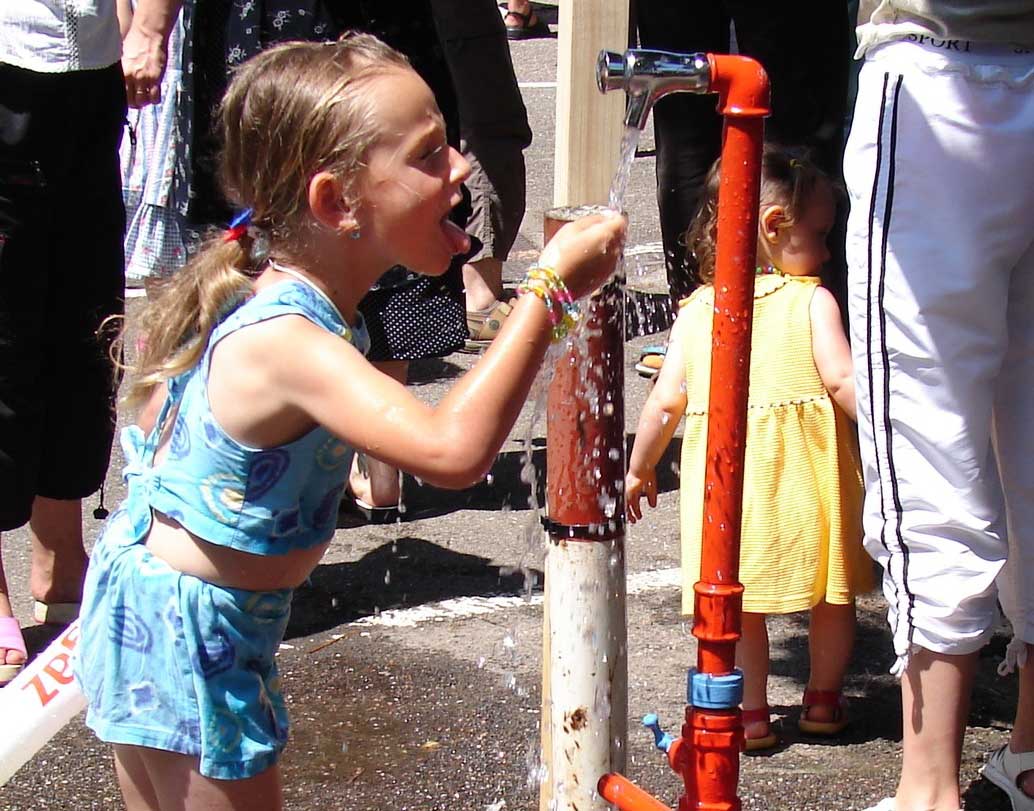Djeca su u visokom riziku za poremećaje povezane s temperaturom u vrućim okruženjima. To može ići od blage iscrpljenosti od vrućine do ozbiljnog, potencijalno smrtonosnog toplotnog udara. Dojenčad i mala djeca, zbog svojih nedovoljno razvijenih centara za termoregulaciju, posebno su ranjiva. Visoke okolne temperature, kao što su one u zatvorenim automobilima ili loše ventiliranim prostorima s temperaturama od 30-40°C, mogu uzrokovati bolesti ili čak smrt.
- Iscrpljenost od vrućine: Ovo stanje može prethoditi toplotnom udaru i često pogađa djecu izloženu visokim temperaturama koje se pretjerano znoje, posebno tijekom napornih fizičkih aktivnosti, a nedostaje im soli i vode. Djeca s iscrpljenošću od vrućine mogu imati simptome poput povraćanja, mučnine, žeđi, glavobolje i umora. Osim toga, mogu imati ubrzanu brzinu otkucaja srca i disanja, dok je krvni tlak obično normalan. Rektalna temperatura obično se kreće između 38 i 40°C.
- Toplotni udar: Toplotni udar ozbiljno je, potencijalno smrtonosno stanje koje zahtijeva hitno djelovanje. Kod djece s toplotnim udarom rektalna temperatura prelazi 40°C, a svijest može biti narušena. Drugi simptomi uključuju mučninu, glavobolju, poremećenu svijest, povraćanje i gubitak vaskularnog volumena.
Koža djece s toplotnim udarom obično je suha, topla i može izgledati crvenkasto ili pepelnasto, ovisno o cirkulaciji.
Radnje za rješavanje iscrpljenosti od vrućine i toplotnog udara:
- Premjestite se na hladnije okruženje: Odmah premjestite dijete na hladnije mjesto kako biste smanjili izloženost visokim temperaturama.
- Nadoknađivanje soli: Djeca mogu primiti 20 ml slane otopine po kilogramu tjelesne težine (možete koristiti kućnu pripremljenu otopinu – jedna žlica kuhinjske soli u 500 ml vode).
- Intravenska terapija: Ako postoji dehidracija i nizak krvni tlak, uspostavite intravensku liniju i dajte otopinu NaCl ili Ringerovu otopinu brzinom od 20 ml po kilogramu tjelesne težine.
- Pratite vitalne znakove: Neprestano pratite vitalne znakove djeteta, uključujući temperaturu.
- Osigurajte otvoren dišni put: Uspostavite dišni put i kontinuirano pratite dijete.
- Aktivno hlađenje: U slučaju toplotnog udara, aktivno hladite dijete, na primjer, prskanjem hladnom vodom, primjenom hladnih obloga ili upotrebom ventilatora.
- Prevoz u bolnicu: Djecu s teškim simptomima toplotnog udara treba odmah prevesti u bolnicu radi daljnjeg pregleda i liječenja.
Važno je brzo reagirati na simptome iscrpljenosti od vrućine i toplotnog udara jer mogu ozbiljno ugroziti zdravlje i život djeteta.

